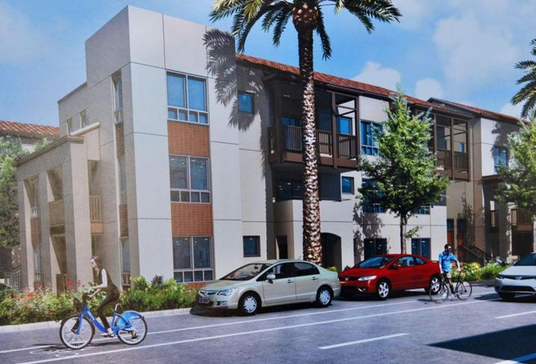CommentsNEW GEOGRAPHY--Little over a decade ago, the housing sector almost brought down not only the American but the world economy. Today the reprise of the housing decline will be playing a very different tune.
In the past bust, it was the fast-growing exurbs, aspirational home of the middle and working classes, that imploded, driving millions of people into foreclosure. Aided by dicey lending practices from the private sector, devastation was most precipitous in states such as California, where public policy helped drive housing prices to unsustainable levels.
This time the biggest problems emerge at the upper-end market, particularly the 80-90 percent of all new multi-family construction that is considered “luxury.” The first signs of diminished demand, and falling prices, can be seen in high-end markets such as Manhattan, San Francisco, London and Sydney, in part reflecting a fall in foreign investment, and shifting demographics that see more millennials entering prime child-bearing ages.
Southern California’s story
The Southland, ground zero for the last housing bust, may well reprise this unwanted role. Inventories are at their highest levels in six years, and prices increasingly wobbly. Perhaps the most obvious candidate for a real estate haircut is downtown Los Angeles, where, according to one study that simply examined changes in median home value, median household income and population found the highest changes in the nation.
To be sure, the once desolate downtown has seen a considerable increase in housing units, with more than 70,000 additional units planned by 2040. Yet what it has not done is emerge as a major job center; in fact, since 2010 its share of total employment in the region is no larger than it was in 2010, while the most rapid growth continues to be in newer suburbs and exurbs.
Projections of up to 30,000 new units over the next three years increasingly reflect wishful thinking, or even delusion. Mayor Eric Garcetti was warned by his own housing department chief that L.A.’s luxury-housing overkill had created a huge 12 percent vacancy rate (5 percent is considered healthy) in all housing built since 2005. Now savvy Chinese real estate website Mingtiandi is warning investors that downtown L.A. is heading for “an imminent glut of luxury condos.” Already landlords of luxury apartments in downtown are giving out free parking — and free rent, as vacancy rates have hit record levels.
The limits of social engineering
Over the past decade, largely due to the state’s climate-change policies, California has sought to stymie new affordable suburban housing. Obsessed by a desire to reduce driving, it has worked to force development into high-density locales near transit, largely in and around the urban core.
In the initial period after the last bust, this policy could boast some market logic. There remained an overhang of foreclosed homes, particularly in the Inland Empire and more remote suburb locations, and the millennial generation was only in their early 20s, an age where many feel comfortable with dense apartment living. The high-end market was further enhanced by investors, largely from Asia, who could be persuaded that Southern California would resemble their own densely settled cities.
These conditions are all changing. Millennials are now entering their 30s, and, when they can afford to, buying homes in the lower-density suburbs, where the vast majority already live. At some point settling in the much ballyhooed “tiny units” will lose appeal. Many Los Angeles inner-city communities are also increasingly concerned about being displaced from their historic neighborhoods in part due to the mayor’s willingness to ignore existing land-use regulations, almost always in favor of density developers.
Finally, the great wave of investment from abroad, notably China, is clearly slowing, exacerbated both the emerging trade conflict and that country’s massive property indebtedness. This has already undermined the apartment market in Sydney and could also hit those parts of the Southland, like downtown, Irvine or the San Gabriel Valley, dependent on foreign buyers willing to pay high prices.
Taking advantage of a crisis
For millions of homeowners, a housing decline is less than good news. House value represent the key asset for many middle- and even working-class Californians. Yet at the same time, any reduction of prices would open opportunities for those — notably millennials, minorities and immigrants — who are now largely frozen out of the market.
Certainly the current policies are not helping most Angelenos, who have suffered a decline in high-paying jobs, soaring rents and one of the highest poverty rates among the largest U.S. cities. In Richard Florida’s “new urban crisis index,” which measures income growth, poverty and housing costs in our 20 largest metros, Los Angeles ranked at the top, followed by New York, San Francisco and San Diego.
Even better, a reduction in prices, or even a slowdown in increases, might suggest to some a need to rethink our housing policy. We are already chasing millennials away, helping make this unique state, despite our unmatched attractions, among the least favored places for relocating people. If a housing downturn leads to a reassessment of policy, it might even be worth it.
(Joel Kotkin is the R.C. Hobbs Presidential Fellow in Urban Futures at Chapman University in Orange and executive director of the Houston-based Center for Opportunity Urbanism. He is an occasional contributor to CityWatch. This piece appeared most recently in New Geography.)
-cw
















